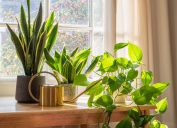The Most Dangerous Plants to Keep in Your House
One of them masquerades as baby spinach.
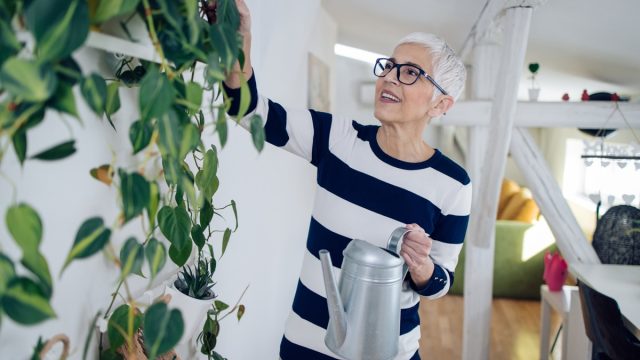
If there's one foolproof way to add joy, color, and liveliness to your home, it's by decorating with plants. Depending on your space, you can include hanging plants on windowsills, climbing plants on shelves, or tree-sized plants in an unused corner. If you take care of them well, these little lives will flourish and provide unmeasurable ambiance. However, if you chose the wrong ones, that plan could backfire. According to Kelly Johnson-Arbor, MD, medical toxicologist and co-medical director of the National Capital Poison Center (NCPC), up to 10 percent of calls to poison centers involve human exposure to plants. Read on to discover what the most dangerous houseplants are to keep in your house.
READ THIS NEXT: 5 Easy Hacks to Save Your House Plants That Gardeners Swear By.
1
Oleander

This flowering houseplant is attractive for its beautiful blooms and low-maintenance nature—simply park it in front of a sunny window and watch it flourish. Then, absolutely never eat it. "This plant contains cardiac glycosides, which may cause severe poisoning when consumed," says Johnson-Arbor. (Cardiac glycosides increase the force of the heart and its rate of contractions, according to Heart Physiology and Pathophysiology.)
According to Mount Sinai, ingesting the plant could lead to low blood pressure, irregular heartbeat, blurred vision, nausea, vomiting, stomach pain, fainting, headache, and even death.
In fact, one 2001 report in the Archives of Disease in Childhood notes that ingesting as little as one leaf of oleander can be lethal in children. The plant is also a widely used rat poison and should be kept away from cats, dogs, and other pets.
2
Foxglove
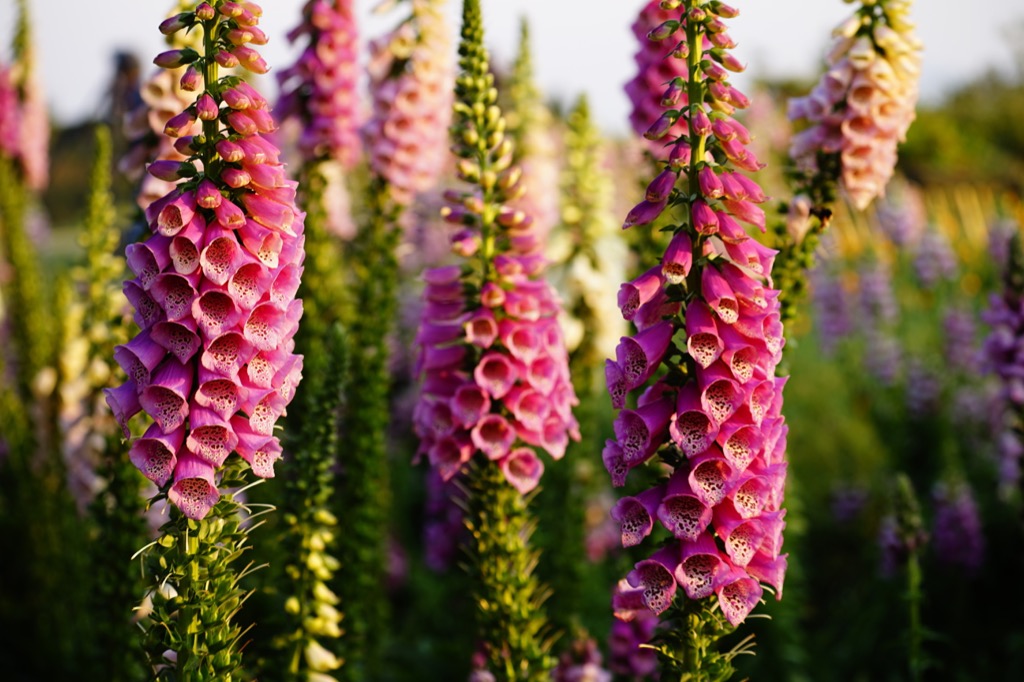
Similar to oleander, the bright and beautiful foxglove plant contains cardiac glycosides. It's also a biennial bloom that flowers every other year. However, Johnson-Arbor notes that in its non-flowering years, the leaves it produces look remarkably similar to baby spinach. "There have been several reports of individuals who became quite ill, with nausea, vomiting, and abnormally slow heart rates, after unintentionally consuming foxglove leaves or steeping foxglove leaves to make tea," she says. Unfortunately, these symptoms can be life-threatening, and individuals often require hospitalization. "Fortunately, there is an antidote available for cardiac glycoside poisonings from both pharmaceuticals and plants," she says. So, if you're exposed, seek immediate emergency care.
READ THIS NEXT: For more gardening advice delivered straight to your inbox, sign up for our daily newsletter.
3
Philodendron
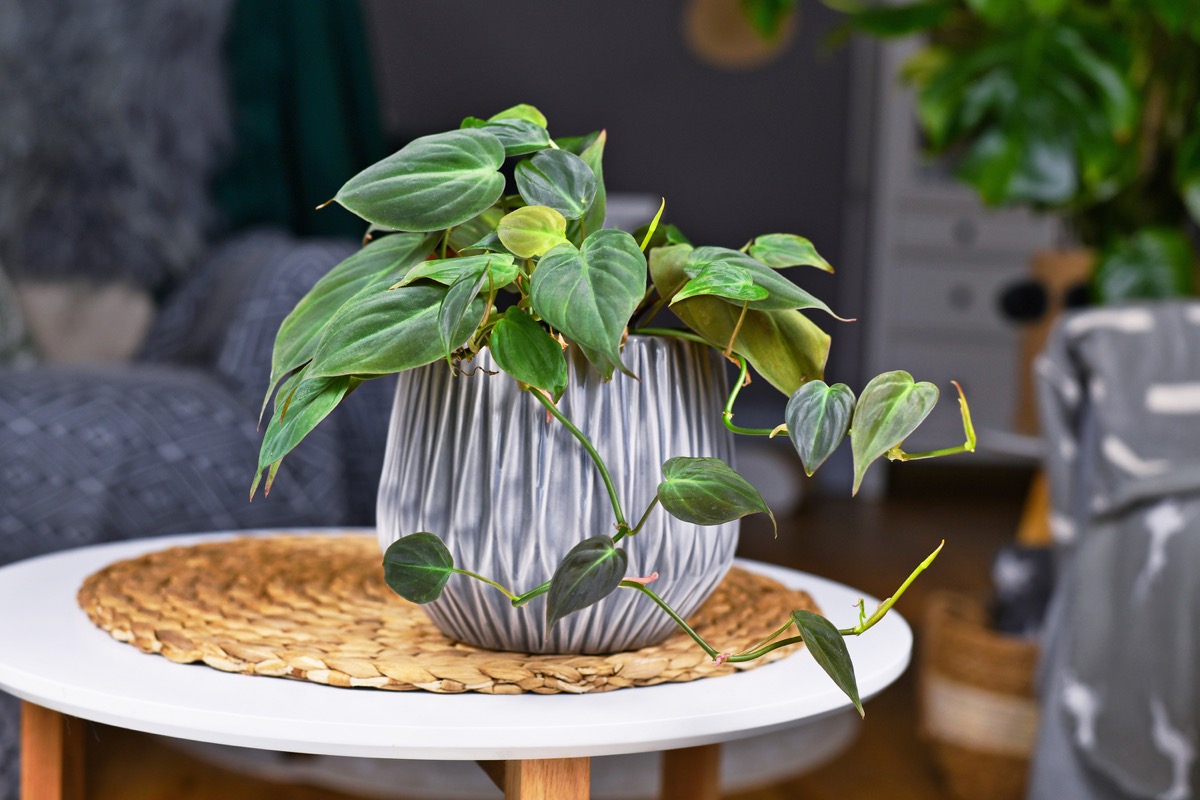
Those who struggle to keep houseplants alive may be drawn to the famously low-maintenance philodendron. This tropical plant, which comes in climbing and non-climbing varieties, only requires water about every two weeks and thrives in most lighting conditions. However, the philodendron contains oxalate crystals that can cause toxicity when touched or consumed, says Johnson-Arbor. When chewed or swallowed, the crystals can cause mouth pain, swelling, painful swallowing, and drooling. Eye or skin exposure to the plant's sap can cause irritation and redness. "Fortunately, these symptoms are unlikely to be permanent or even long-lasting," says Johnson-Arbor. "But since they can be very painful and irritating, it is recommended to avoid touching or consuming these plants."
4
Dumbcane

Dumbcane might sound like an unsophisticated plant, but it's got the same oxalate crystal defense mechanism as the philodendron. In fact, its name was derived from its toxicity, as swallowing the dumbcane plant can cause difficulty speaking or loss of speech. While the symptoms you might experience from ingesting this plant are scary, they rarely lead to a medical emergency. According to the NCPC, in one case, an 18-month-old boy chewed a piece of dumbcane and began to gag. Poison Control instructed his mother to rinse his mouth and offer him something cold and creamy to eat or drink. Within an hour, the boy's symptoms had subsided.
5
Fig Tree
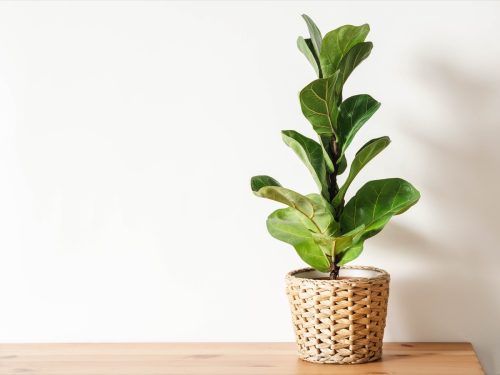
Fig trees have been all the rage in interior design recently. However, those hoping to add one to their home should take note. "Certain plants, including fig trees (ficus species) and poinsettias, can cause allergic reactions in people who have a latex allergy," says Johnson-Arbor. "This is because the sap of these plants contains latex." When the plant stem or leaf is broken, that sap can leak out and a cause reaction. Of course, if you're not allergic or only have a mild allergy, that's fine. But if you're someone who experiences severe hives or anaphylaxis, you'll want to steer clear.
READ THIS NEXT: If Your Plants Are Drooping, This Bathroom Product Will Revive Them.
